Jonathan Erdman
An already expansive drought may engulf virtually the entire western United States this summer, according to a recently released outlook.
You have to look closely to find areas of the West that are drought-free right now.
About 83 percent of the region is in drought, including all of Arizona, California, Nevada and Utah, according to the June 15 Drought Monitor analysis. Parts of those states, as well as New Mexico, Oregon and Idaho, are in exceptional drought, the worst category.
But there are a few spots that aren't yet officially in drought, including western Washington, parts of Montana, Wyoming, eastern Colorado and northeastern New Mexico.
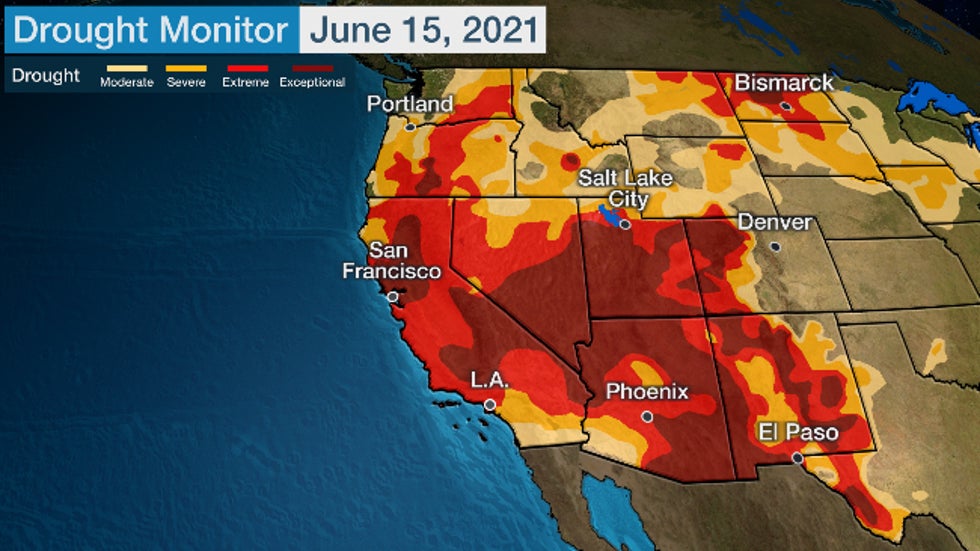 The Drought Monitor analysis as of June 15, 2021, with areas of worse drought shown by progressively darker contours of tan and brown.
The Drought Monitor analysis as of June 15, 2021, with areas of worse drought shown by progressively darker contours of tan and brown.Many of those oases in a sea of drought might not remain drought-free for long.
A seasonal outlook released June 17 from NOAA's Climate Prediction Center expects drought will likely develop this summer in the remaining non-drought areas of western Washington, Idaho, Montana, Wyoming and also in the High Plains of western Nebraska and southwest South Dakota. These areas are shown in yellow on the map below.
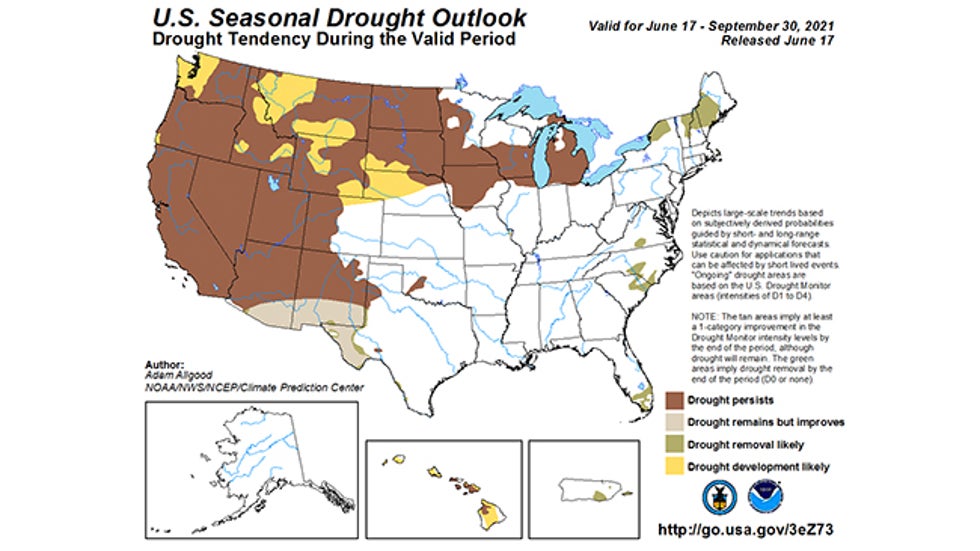 July-September drought outlook released on June 17. Areas where the drought will continue are in brown, where drought will likely develop in yellow and where drought may improve are in light gray (southern Arizona, southern New Mexico and West Texas).
July-September drought outlook released on June 17. Areas where the drought will continue are in brown, where drought will likely develop in yellow and where drought may improve are in light gray (southern Arizona, southern New Mexico and West Texas).The factors behind this outlook are straightforward.
NOAA expects a drier-than-average rest of summer from the Rockies to the Northwest.
The agency also expects a hotter-than-average summer in the entire West as more of the sun's energy goes directly to heating the air, rather than pulling moisture out of dry, parched ground and vegetation.
Summer is also the driest time of year near the West Coast and northern Great Basin.
(MORE: U.S. Heading Into Peak Time of Year for Wildfires)
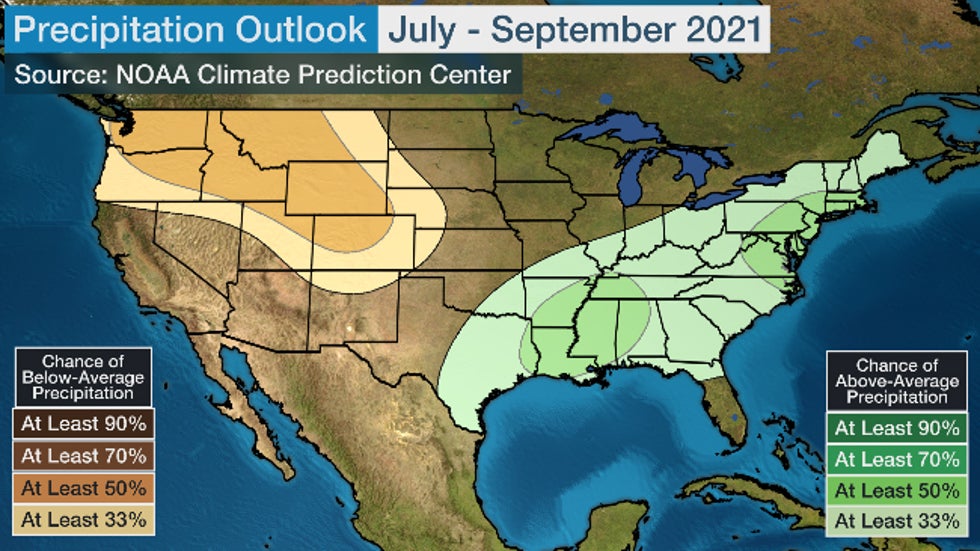 Precipitation outlook from July through September 2021, issued on June 17. Areas in darker brown/green indicate increased confidence of a drier/wetter than average July-September period.
Precipitation outlook from July through September 2021, issued on June 17. Areas in darker brown/green indicate increased confidence of a drier/wetter than average July-September period.Given the outlook, this could become the most widespread western drought this century.
According to the National Drought Mitigation Center, only the early- to mid-2000s drought that peaked in August 2003 was more expansive in the West than the current drought.
That 2003 drought covered almost 88% of the West, but strangely enough, didn't include most of California.
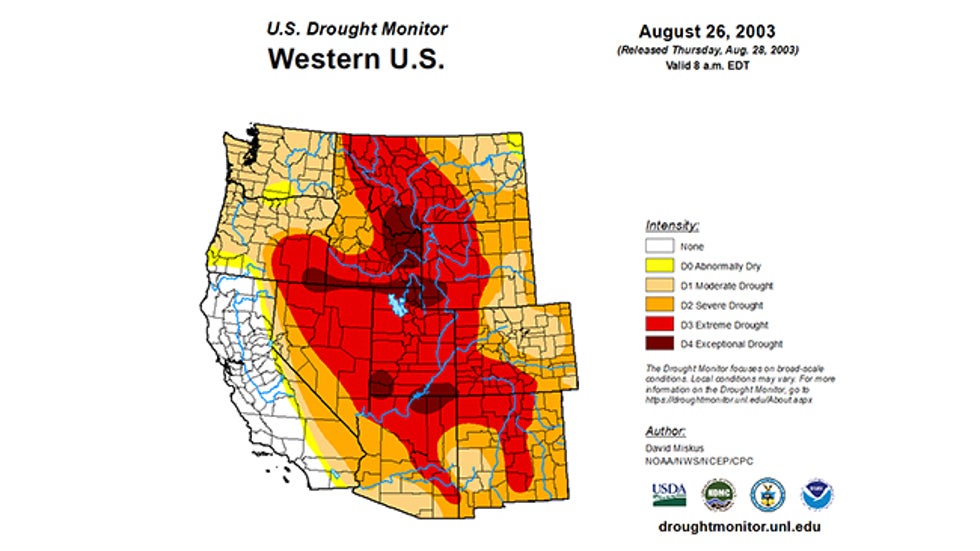 The Drought Monitor analysis on Aug. 26, 2003, the most expansive drought in the West this century. Areas of worse drought are shown by progressively darker contours of tan and brown.
The Drought Monitor analysis on Aug. 26, 2003, the most expansive drought in the West this century. Areas of worse drought are shown by progressively darker contours of tan and brown.Glimmers of Hope
There are a couple of wet glimmers of hope in this otherwise dry outlook.
The wet phase of the monsoon is about to bring more numerous thunderstorms to parts of the Desert Southwest where that typically occurs each summer, particularly Arizona, New Mexico, and southern Nevada.
For parts of northwest Mexico and the southwestern U.S., over half their annual precipitation usually comes during the monsoon.
But that's not guaranteed. Last summer's monsoon was dubbed a "nonsoon." It was the driest July through September on record in Arizona and Utah.
For now, NOAA's Climate Prediction Center suggested some "localized (drought) relief" is possible in parts of southern Arizona, southern New Mexico and West Texas. However, it likely won't be enough to completely wipe away such an exceptional drought.
One part of the West that might evade drought this summer is eastern Colorado.
In late spring 2020, drought began to spread in eastern Colorado. By the following summer, it gripped the entire state.
But this spring, eastern Colorado and far southeastern Wyoming were a wetter exception to the dry western rule.
Contributing to this was a dumping of feet of snow by a mid-March blizzard, followed by a soggy May, particularly in southeastern Colorado.
This essentially erased the drought from eastern Colorado.
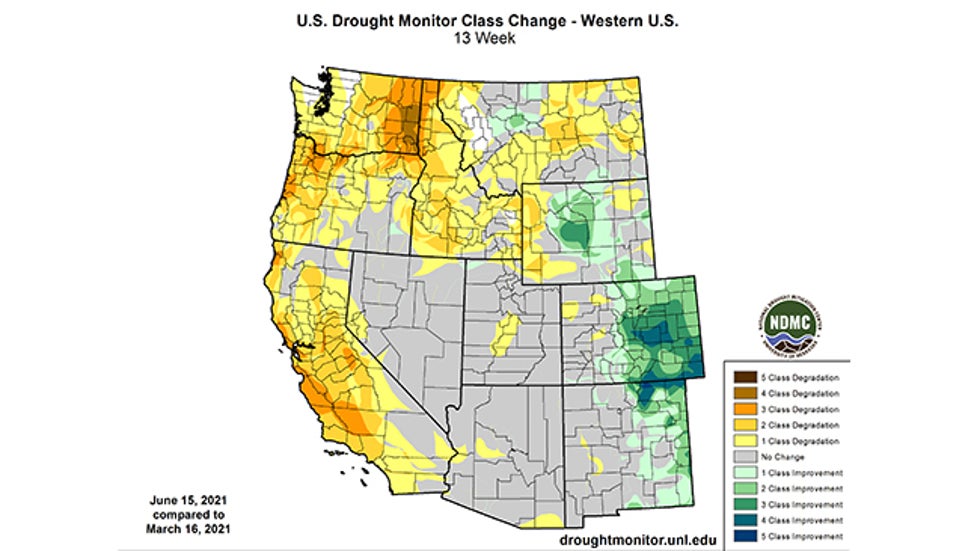 Change in the Drought Monitor from March 16 to June 15, 2021. Areas where drought improved/worsened the most are shown in darker green/brown contours.
Change in the Drought Monitor from March 16 to June 15, 2021. Areas where drought improved/worsened the most are shown in darker green/brown contours.The Weather Company’s primary journalistic mission is to report on breaking weather news, the environment and the importance of science to our lives. This story does not necessarily represent the position of our parent company, IBM.
The Weather Company’s primary journalistic mission is to report on breaking weather news, the environment and the importance of science to our lives. This story does not necessarily represent the position of our parent company, IBM.

No comments:
Post a Comment